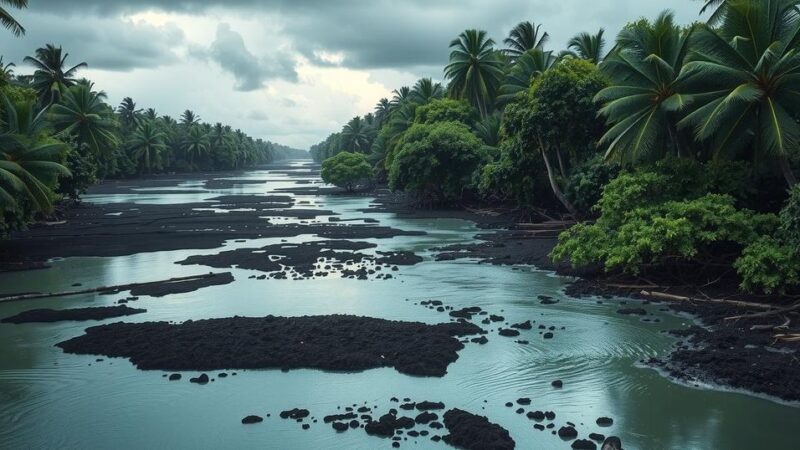Research led by Curtin University has confirmed the ongoing presence of Very Low Sulphur Fuel Oil (VLSFO) from the MV Wakashio spill in Mauritius’ mangroves, almost three years post-incident. The study reveals a significant correlation between contaminated sediment and the spilled oil, pointing to continued environmental risks despite natural degradation. This finding stresses the need for understanding the ecological repercussions of this new type of marine fuel and its behavior after spills.
Three years after the bulk carrier MV Wakashio ran aground off the coast of Mauritius, leading to the discharge of 1,000 tons of Very Low Sulphur Fuel Oil (VLSFO), research spearheaded by Curtin University has revealed persistent oil contamination in the area’s mangrove ecosystem. This discovery is particularly concerning as it exposes ongoing environmental risks and highlights the spill’s lasting impact on critically sensitive habitats near Ramsar conservation sites.
Dr. Alan Scarlett, leading researcher from Curtin University’s WA Organic and Isotope Geochemistry Center, indicated that the chemical analysis of oil traces found in the mangrove sediments matched the VLSFO from the Wakashio. While local communities have long suspected oil presence, this research provides the scientific proof needed to validate those concerns and understand the spill’s environmental implications better.
The research team meticulously analyzed samples from various mangrove sites, identifying clear evidence of oil sourced from the Wakashio within contaminated sites, contrasting with an unaffected reference site. “We confirmed the reference site was free of oil contamination, while another site contained oil originating from the Wakashio’s fuel tanks,” Dr. Scarlett stated.
Despite significant weathering and biodegradation of the spilled oil since the incident, which reduced many toxic compounds, its presence raises potential ecological risks to the mangrove environment. The team collaborated with the Woods Hole Oceanographic Institution to document the chemical characteristics of the oil, confirming its enduring presence within the ecosystem.
The study also employed models developed from the National Oceanic and Atmospheric Administration’s oil spill scenario tool, WebGNOME-ADIOS, to evaluate the behavior of the spilled VLSFO in comparison to traditional marine heavy fuel oils. Dr. Scarlett explained, “Our modelling suggested more of the Wakashio’s fuel would evaporate, naturally disperse or sink compared to traditional fuels, but assessing the impact on organisms remains challenging.”
The findings of the Curtin University research highlight the long-lasting consequences of the VLSFO spill from the MV Wakashio on Mauritius’ mangrove ecosystems. Despite the natural degradation of some toxic compounds, the oil’s enduring presence poses a potential risk to local biodiversity. This study emphasizes the necessity for comprehensive assessments of new marine fuels and their ecological impacts after spills.
Original Source: www.marinelink.com






